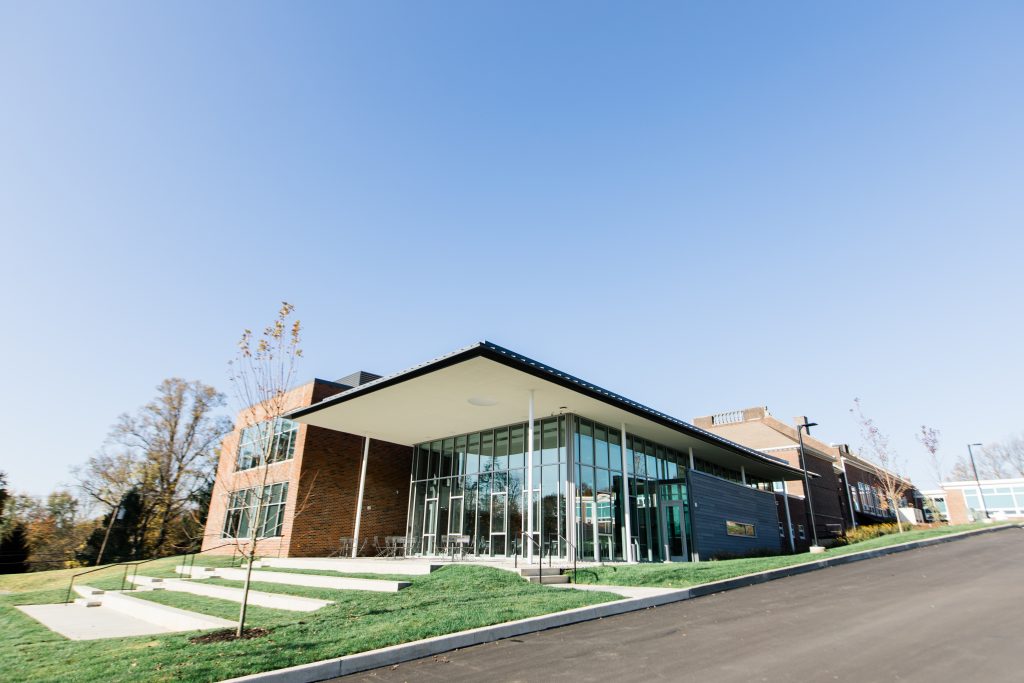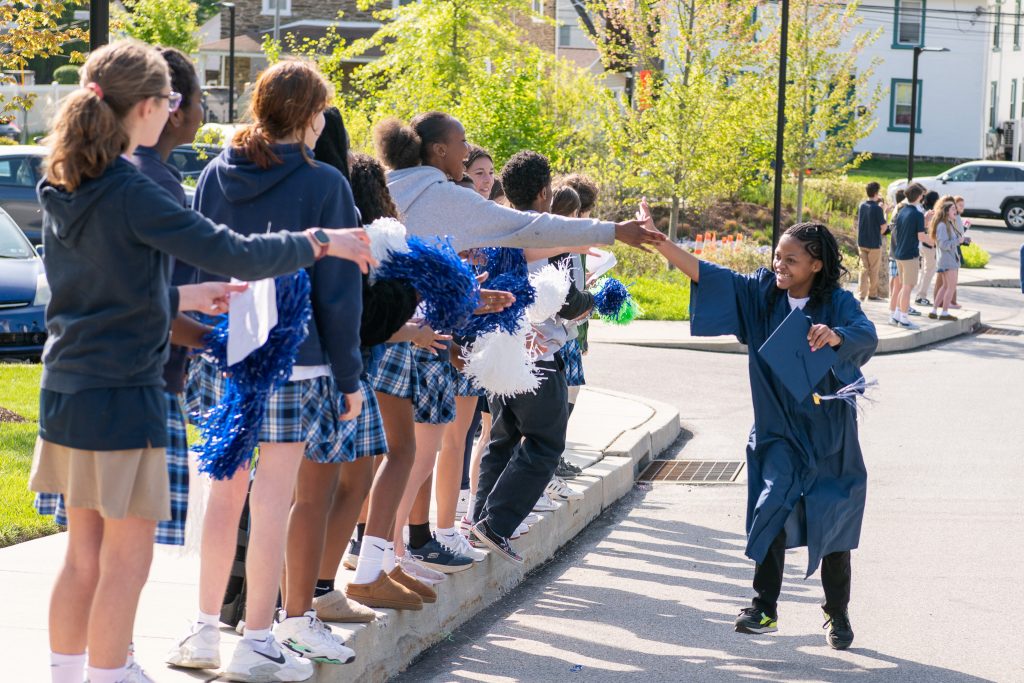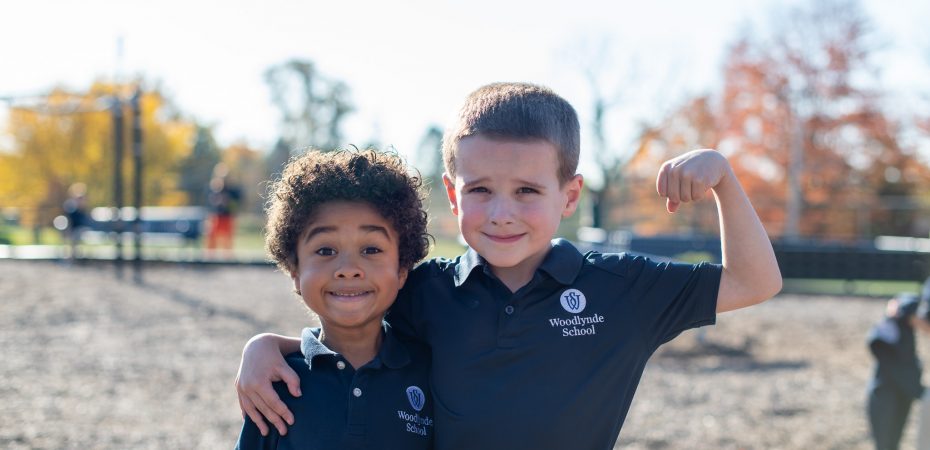This year, Woodlynde School marks a remarkable milestone: the 50th anniversary of the region’s oldest and most trusted school for students who learn differently. What began in 1975 as a bold idea—to create a school where students with learning differences could thrive, not just survive—has evolved into a nationally recognized model for a learning environment built around understanding and growth
Over the past five decades, Woodlynde has grown and adapted to meet the changing needs of students while staying true to its founding mission: to empower students with learning differences to discover their strengths, find their confidence, and achieve success in school and in life.
“Woodlynde was founded on the belief that students who learn differently deserve the same opportunities for challenge, belonging, and achievement as any other learner,” said Head of School Dr. Gregory Martin. “Fifty years later, that belief remains at the heart of everything we do.”

A Half-Century of Growth and Innovation
From its earliest days in a small building in Radnor to its current thriving campus in Strafford, Woodlynde has provided a supportive environment for students with a wide range of learning differences. Woodlynde supports diagnoses including ADHD, Autism Level 1, dyslexia, executive function challenges, auditory processing disorders, and other language- and math-based learning differences. Over the years, the school has continued to evolve its programs and facilities to help these students thrive academically, socially, and emotionally.
Recent years have brought exciting additions to campus that reflect Woodlynde’s forward-thinking approach to education. The creation of the Schmader Student Commons, a multi-million-dollar project, has transformed the heart of campus into a central hub for learning, connection, and collaboration. The space includes modern classrooms, updated arts and music rooms, a media room, and gathering areas where students can work together, share meals, and build community. The addition of a MakerSpace has allowed students to bring creativity and innovation to life through hands-on projects that combine design thinking, technology, and problem-solving.
Another major milestone is the launch of The Richard & Jody Homans Centers for Innovation, which include the Ryan Family Maker Space, the Diagnostic and Assessment Center, and the Center for Literacy and Learning. With many families facing long waitlists for assessments and diagnoses, Woodlynde provides a way for questions to be answered more quickly. Through professional development, testing and diagnostics, and outreach programs, the Centers help families and educators throughout the region better understand and support students with learning differences.
“These additions represent our commitment to evolving with the times,” said Martin. “But they also demonstrate how deeply our mission continues to guide us. Every new space and program is designed to empower students to learn in ways that work for them.”
Though Woodlynde remains an intentionally small school, its size does not mean sacrificing opportunities. Students enjoy a full range of experiences typically found at larger schools, including sports teams, arts programs, clubs, international trips, and a variety of extracurricular activities—all within a close-knit, supportive community where every student is known and valued.
Meeting Students’ Social and Emotional Needs
As education has evolved, so too have the challenges students face. Since the COVID-19 pandemic, schools across the country have seen a sharp rise in anxiety and stress among children and teens. In response, Woodlynde strengthened its commitment to the social and emotional well-being of its students by adding a school psychologist to its support team and developing “Connections,” a comprehensive social-emotional learning curriculum for all students.
Connections gives students tools to manage emotions, build resilience, and navigate challenges with confidence. Combined with the school’s individualized approach to academics, these supports ensure that every student is seen and cared for as a whole person.
“At Woodlynde, we recognize that learning and emotional health go hand in hand,” Dr. Jay Tarnoff, Woodlynde’s School Psychologist said. “By helping students feel understood and supported, we create the foundation for both personal and academic growth.”

Celebrating Differences, Removing Stigma
At a time when conversations about neurodiversity and inclusion are gaining momentum, Woodlynde’s 50th anniversary is a moment to reflect on how far society has come—and how much the school has contributed to that progress.
For decades, Woodlynde has been at the forefront of breaking down the stigma surrounding learning differences. What was once viewed as a challenge to overcome is now celebrated as a different way of thinking, learning, and engaging with the world.
“Every day, our students remind us that learning differences are not roadblocks—they’re simply part of what makes each person unique,” said Martin. “We celebrate those differences because they lead to creativity, resilience, and empathy.”
Looking Ahead
As Woodlynde celebrates its 50th year, the school is not just looking back on its history, it is looking forward to the next generation of students who will walk its path. With continued investments in literacy, technology, and emotional well-being, the school is committed to ensuring that its next 50 years are as transformative as its first.
“From the very beginning, Woodlynde has been about more than academics. It’s about believing in every student’s potential,” Martin said. “Fifty years on, that belief continues to guide our school and inspire every child to walk their own path with confidence.”
In a world that is finally beginning to understand that learning differences are simply differences in how the brain works, Woodlynde School stands as a testament to what’s possible when those differences are not just accepted—but celebrated.
For more information about Woodlynde School, please visit https://www.woodlynde.org.

 Courtesy of Woodlynde School
Courtesy of Woodlynde School